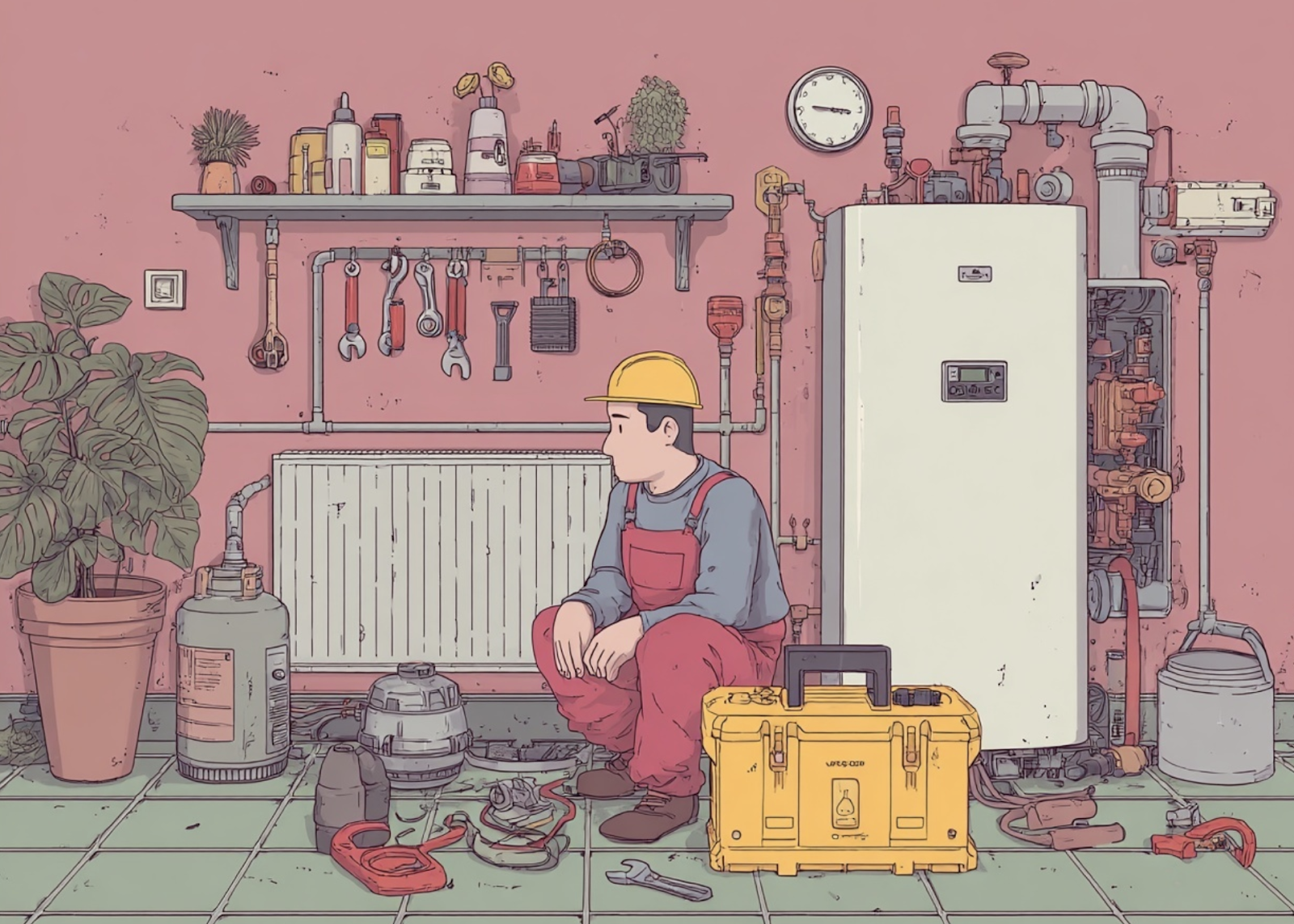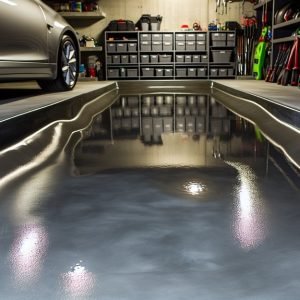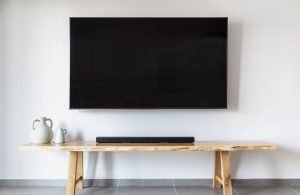Last Updated on October 30, 2025 by teamobn
Winter hits hard in the northeast. Your heating system becomes your lifeline when temperatures plummet below freezing for weeks on end. But here’s the thing — most homeowners panic at the first sign of trouble, immediately reaching for their phone to call expensive technicians.
You might be surprised how many heating issues you can actually fix yourself. Heating repairs don’t always require professional intervention, especially when you understand the basics and have the right approach. Competent DIY builders save thousands annually by handling routine maintenance and minor fixes independently. That said, knowing your limits prevents costly mistakes and dangerous situations.
Let’s be honest: Northeast winters are unforgiving. Your furnace, boiler, or heat pump works overtime from October through April. This constant demand creates wear patterns and problems that southern homeowners rarely encounter. Understanding these regional challenges puts you ahead of the game.
Contents
Tools and Materials You’ll Need
Before beginning any repair work, gather the necessary equipment. You probably own some of these already.
Basic Tools:
- Adjustable wrench set
- Screwdriver collection (flathead and Phillips)
- Digital multimeter for electrical testing
- Flashlight or headlamp
- Work gloves and safety glasses
Specialty Items:
- Radiator bleeding key
- HVAC-specific vacuum
- Replacement air filters (multiple sizes)
- Pipe thread compound
- Wire nuts and electrical tape
Smart builders keep a dedicated heating maintenance kit. Store everything in one toolbox so you’re never hunting for supplies during an emergency. Trust me, you don’t want to discover missing tools when your heat stops working on a Sunday night in January.
Common Northeast Heating Problems
Cold climate conditions create predictable failure patterns. Recognizing these early saves money and prevents system breakdowns during peak demand periods.
Clogged Air Filters Northeast dust, pollen, and indoor air circulation create filter buildup faster than milder climates. Dirty filters reduce airflow, forcing your system to work harder. Change them every 30-60 days during heating season — not the manufacturer’s suggested quarterly schedule.
Radiator Air Pockets Steam and hot water systems develop air bubbles that prevent proper circulation. You’ll notice cold spots or completely cool radiators while others work normally. This happens frequently in multi-story homes where air naturally rises and gets trapped.
Heat Pump Ice Buildup Northeastern humidity and temperature fluctuations cause ice formation on outdoor units. Some frost is normal, but thick ice layers block airflow and strain components. Understanding when defrost cycles should activate helps identify malfunctions early.
Boiler Pressure Issues Water-based heating systems lose pressure gradually through minor leaks and normal operation. Low pressure prevents proper circulation. High pressure stresses joints and can damage components. Most boilers include pressure gauges, but many homeowners ignore them until problems develop.
Thermostat Malfunctions Temperature swings and electrical fluctuations affect digital thermostats. Incorrect readings cause heating cycles that waste energy or leave you uncomfortable. Sometimes the fix involves simple recalibration rather than replacement.
DIY Heating Repairs Step-by-Step
Here’s where we separate simple fixes from complex overhauls. Start with these manageable repairs that don’t require specialized training or dangerous procedures.
Air Filter Replacement and Maintenance
This sounds obvious? Maybe. But it works wonders for system efficiency. Locate your filter housing — usually near the furnace or in return air ducts. Turn off your system first. Always.
Remove the old filter and examine it against a light source. If you can’t see through it clearly, replacement time has arrived. Note the size printed on the frame before disposing of the old one. Filters come in different thicknesses and efficiency ratings (MERV ratings). Higher MERV numbers capture smaller particles but may restrict airflow in older systems.
Install the new filter with airflow arrows pointing toward the furnace. Mark your calendar for the next change. I keep spare filters in my basement so I never skip this crucial step.
Radiator Bleeding Technique
Steam and hot water radiators accumulate air that prevents proper heating. You’ll need a radiator key (available at hardware stores for under $5) and a small container to catch water.
Start with your system running and radiators warm. Locate the bleed valve — typically a small square or hex fitting on the side or top. Insert your key and turn counterclockwise slowly. You’ll hear air hissing out. Keep turning until water appears, then immediately close the valve.
Work systematically through your house, starting with the highest radiators first. Air rises, so upper floors usually need bleeding more frequently. Don’t rush this process — opening valves too far can spray hot water everywhere.
Thermostat Calibration and Power Verification
Temperature accuracy affects comfort and energy costs. Place a reliable thermometer next to your thermostat for several hours. Compare readings during stable conditions (no direct sunlight, heating cycles, or external doors opening).
If readings differ by more than 2-3 degrees, your thermostat needs attention. Many digital units have calibration settings in their programming menus. Consult your manual for specific adjustment procedures.
Check power connections if your thermostat displays errors or behaves erratically. Loose wires cause intermittent operation. Turn off power at the circuit breaker before examining connections. Wire nuts should be tight, and terminal screws shouldn’t wiggle.
Cleaning Vents and Registers
Blocked airflow kills heating efficiency. Pet hair, dust, and household debris accumulate in supply and return vents faster than you’d expect. Remove register covers and vacuum thoroughly. Use a brush attachment to dislodge stubborn buildup.
Check for objects that fell into ducts — toys, socks, even small household items sometimes block airflow. I once found a tennis ball wedged in a return duct that had been causing uneven heating for months.
Outdoor Unit Maintenance
Heat pumps and outdoor condensers need breathing room. Northeast weather dumps leaves, snow, and debris around units constantly. Clear everything within two feet of the unit. Ice buildup requires careful attention — never use sharp tools or hot water to remove it.
Gently brush snow off coils with a soft broom. Thick ice formation often indicates defrost cycle problems that need professional diagnosis.
Basic Boiler and Water Heater Maintenance
Monitor pressure gauges regularly. Most residential boilers operate between 12-15 PSI when cold, 18-25 PSI when hot. Low pressure usually means adding water through the fill valve. High pressure requires bleeding radiators or checking for closed valves.
Flushing sediment from tank-style water heaters extends equipment life. Attach a garden hose to the drain valve and run several gallons until water runs clear. Annual flushing prevents mineral buildup that reduces efficiency.
Warning Signs: When DIY Isn’t Enough
You might be wondering where to draw the line between manageable repairs and professional territory. Here are the red flags that mean stop immediately and call for backup.
Refrigerant Leaks and Compressor Issues
If you smell something sweet or chemical near your heat pump, suspect refrigerant leaks. This stuff is dangerous and requires EPA-certified technicians to handle safely. Compressor failure creates loud grinding, squealing, or knocking sounds. These repairs cost thousands — don’t risk making them worse.
Electrical Problems Beyond Basic Connections
Frequent circuit breaker trips, burning smells, or sparking components demand immediate professional attention. Electrical fires kill people and destroy homes. I’ve seen too many DIY electrical “fixes” that created dangerous conditions.
Gas Line and Combustion Issues
Never mess with gas connections, burner assemblments, or venting systems. Carbon monoxide poisoning is silent and deadly. If you smell gas, hear hissing sounds, or notice yellow flames instead of blue ones, shut off your system and call immediately.
Persistent Performance Problems
When your repairs don’t solve the problem, something deeper is wrong. Continuous cycling, uneven heating throughout your home, or dramatically increased energy bills indicate system-level issues beyond basic maintenance.
Professional vs DIY: Cost Analysis
Let’s talk numbers. Understanding repair economics helps you make smart decisions about when to tackle projects yourself versus hiring professionals.
DIY Savings Breakdown:
- Air filter changes: $15-30 vs $85-120 service call
- Radiator bleeding: $5 tool vs $150-200 professional visit
- Thermostat calibration: Free vs $75-125 diagnostic fee
- Vent cleaning: $20 supplies vs $200-300 duct cleaning service
Professional Investment Categories:
- Refrigerant work: $200-800 (legally required certification)
- Electrical repairs: $150-500 (safety and code compliance)
- Gas system work: $300-1000+ (life safety issues)
- Major component replacement: $1500-5000+ (warranty protection)
Smart builders handle routine maintenance themselves but invest in professional service for complex systems. The break-even point usually falls around $150-200 in labor costs.
Seasonal Maintenance Schedule
Timing prevents problems. Northeast heating systems need attention before, during, and after winter seasons.
Fall Preparation (September-October):
- Replace all air filters
- Test thermostat operation
- Bleed radiators in hot water systems
- Clear outdoor units of summer debris
- Check boiler pressure and water levels
- Schedule professional tune-ups for complex systems
Winter Monitoring (November-March):
- Monthly filter checks (replace as needed)
- Weekly outdoor unit inspection for ice buildup
- Monitor unusual sounds, smells, or performance changes
- Keep spare parts handy (filters, fuses, thermostat batteries)
Spring Shutdown (April-May):
- Final filter replacement
- Clean supply and return vents thoroughly
- Document any performance issues for summer repair scheduling
- Bleed remaining air from hot water systems
Safety Guidelines and Best Practices
Here’s what I learned after 20+ years working on heating systems: safety shortcuts aren’t worth the risk. Ever.
Power Safety Protocol Always shut off electrical power at the circuit breaker before working on any heating equipment. Test circuits with a multimeter to verify power is actually off. I keep voltage testers in my toolbox specifically for this purpose.
Protective Equipment Standards Wear safety glasses when working around boilers or furnaces. Hot water and steam cause severe burns instantly. Work gloves protect against sharp edges and hot surfaces. Keep a flashlight handy — heating equipment often lurks in dark basement corners.
Emergency Preparedness Know your system’s emergency shutoff locations. Gas systems have shutoff valves near the equipment and at the meter. Water systems have supply valves and drain locations. Post emergency contact numbers where family members can find them easily.
Manufacturer Guidelines Every system is different. Download and read your equipment manuals. Warranty coverage often depends on following specific maintenance procedures. Some manufacturers void warranties for DIY work beyond basic filter changes.
Key Points to Remember
Northeast heating challenges don’t have to drain your bank account or leave you shivering. Most homeowners can handle routine maintenance and minor repairs with basic tools and common sense. The key lies in understanding your limits and respecting the complexity of modern heating systems.
Start with simple tasks like filter changes and vent cleaning. Build your confidence gradually before tackling more complex procedures. When in doubt, consult professionals — the cost of expert help beats the expense of repairing DIY mistakes.
Your heating system represents a major investment in home comfort and energy efficiency. Treat it with respect, maintain it consistently, and it’ll keep you warm through many harsh winters. Smart DIY builders know when to pick up tools and when to pick up the phone.






